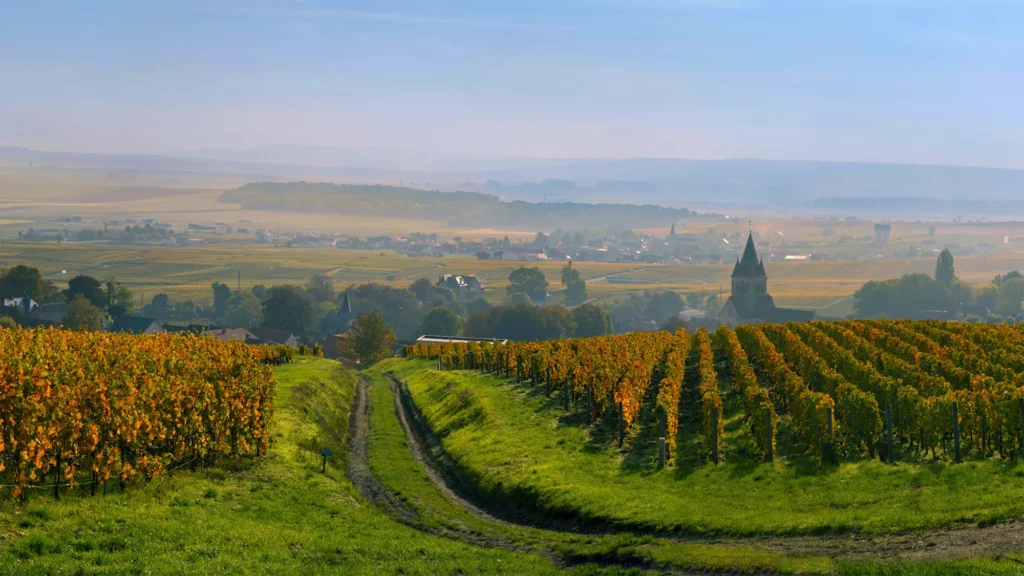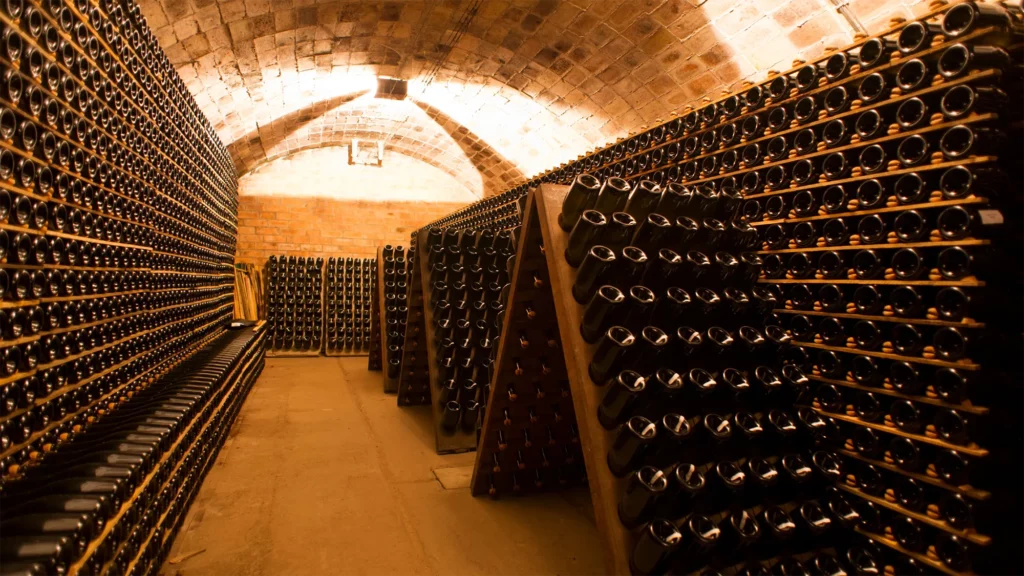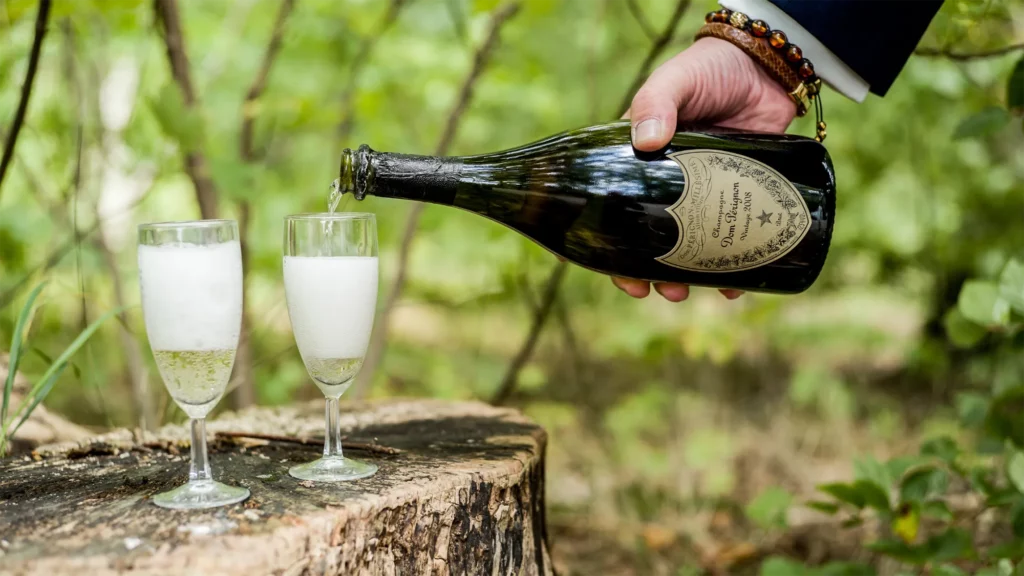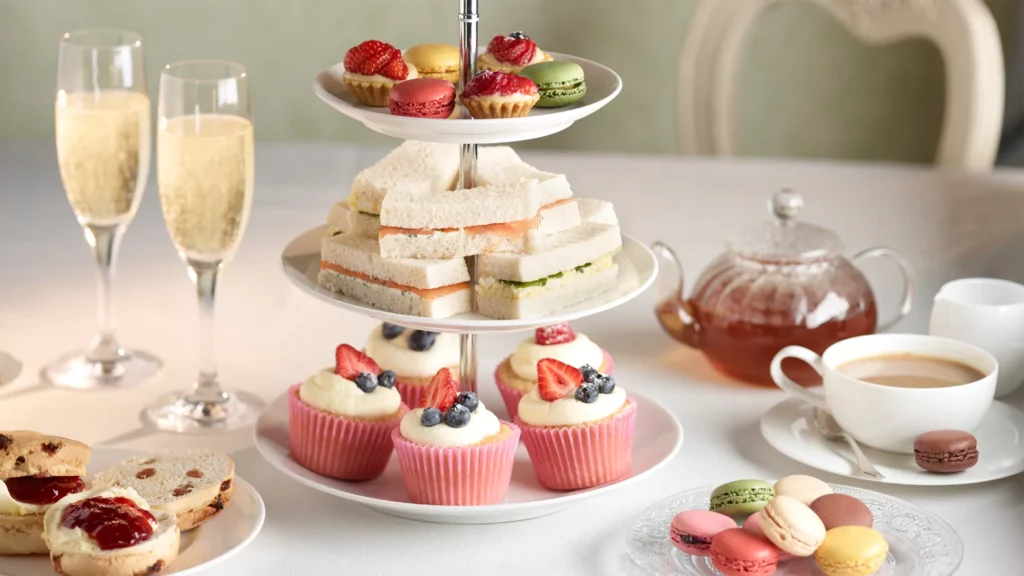Champagne is probably one of the most famous wines of the world. This sparkling wine is produced in France in a region that bears the same name. Champagne is a AOC sparkling wine, consequently only sparkling wines from this region can boast this denomination.
Champagne is the perfect wine to celebrate the everyday life and the special days, too. It pairs well with both traditional and innovative dishes.
Content:
- Early History: the Origin of a Myth
- Which Grapes Are Used
- How Champagne is Made
- Types of Champagne
- How to Store Champagne
- How to Saber a Bottle of Champagne
- Pairings
Early History: the Origin of a Myth
Until the 16th century, Burgundy wines were the most famous. The tables turned in the 17th century, when the the winemakers began to produce white wines from black grapes and obtained the Vin gris.
The result was a sparkling wine that is still bottled in March. In this period, in fact, the yeasts reactivate thanks to the rise in temperatures. Yeasts transform sugars into ethyl alcohol and carbon dioxide.
The real innovation is owed to Dom Pierre Pérignon, a Benedictine monk of the Hautvillers Abbey, who obtained a clear wine by decanting the wine at the right time. Furthermore, choosing to bottle with the cork stopper, he managed to retain the foam.
In less than a couple of centuries, the production of champagne increased from a few hundred thousand bottles in 1785 to almost 30,000,000 million at the end of the 19th century.
The growth of production was followed by a commercial expansion, also supported by the technical innovation, such as:
- François’s tool for measuring residual sugar
- the studies about the yeasts by Maumené and Pasteur
AOC Champagne was born in 1936. In 2000 production exceeded 300,000,000 bottles.
Which Grapes Are Used
The varieties are:
There are 4 systems of education:
- cordon de royat: a type of spurred cordon, used for Pinot Noir
- valée de Marne: used for Pinot Meunier, in the area of the same name
- chablis: mainly used for Chardonnay
- guyot: widely used, except for Grand crus and Premier crus

There are also 2 other grapes in the specification:
Some producers also use Pinot Gris, Pinot Blanc, Enfumé and Pinot de juillet. Finally, there are endangered vines.
How Champagne is Made
Harvest and pressing
Production begins with hand-harvesting and gentle pressing. Then, after pressing, the yield must not exceed 2550 liters of juice for every 4000 kg of grapes. The first pressing is called cuvée, while the second is called taille. From this second pressing, they obtain 500 liters of juice. Finally, rebêche is the name of the third pressing.
First, the juice undergoes a clarification process, then is fermented. In order to do so, each maison decides whether to carry out malolactic fermentation. This is followed by the assembly of different base wines.
Liqueur de tirage
Now, the producers add the liqueur de tirage, that is a mixture of sugar, yeasts and other substances.
This is followed by bottling the obtaines mixture in champagne bottles and resting them horizontally in the chalk cellars at 10-12 °C for a couple of months.
Resting sur lattes, the yeasts, once dead, recombine and create the wide aromatic range of Champagne.
Aging on lees
The aging depends of the type of cuvée:
- standard cuvée : 2-3 years
- millesimé: 3-5 years
- cuvée de prestige: 5-10 years

Dégorgement or disgorgement
After aging in the bottles, there is the dégorgement or disgorgement, which means that in this phase the yeasts are eliminated. The neck of the bottle is immersed upside-down in a liquid at -25 -28 °C so that the frozen lees are forced out of the bottle by the wine’s carbon dioxide pressure.
To replenish that small quantity of wine, they add a little of the same base-wine or, as an alternative, the liqueur de dosage or d’expédition (i.e. a mixture of wine and cane sugar or grape sugar/fructose).
After the dosage, the bottle is capped with a cork and a metal cage.
Types of champagne
There are various types of champagne based on:
- color
- grapes
- dosage
- price
Color
Usually, Champagne comes in a straw yellow shade, or a graceful golden tone.
In order to produce the rosé variety, they can:
- Start from white base-wines and then add a little red wine (Pinot Meunier or Pinot Noir), or;
- Use Pinot Noir/Pinot Meunier and let it macerate for a few hours. Champagne will result in a delicate pink shade, accompanied by aromas of melon and mandarin. A longer maceration gives an intense and lively pink as a result. This is Champagne Saignée.
Suitable grapes
- Blanc de Blancs: the base-wines come from white grapes.
- Blanc de noirs: the vinification takes place with Pinot Noir or Pinot Meunier, vinified alone or blended together with other black grapes.
- Cuvée: it is made mixing base-wines different by variety, territory and year.
- Millesimé: these Champagnes are produced with grapes harvested in a specific harvest and a particular year.

Dosage
The dosage varies based on the amount of residual sugar, namely:
- brut nature/sans dosage/pas dosé: the residual sugar is < 3 g/l. The result is a drier Champagne, with a sharp but not pungent acidity. Brut nature is usually little appreciated by novices, while it is sought after by more expert tasters
- extra brut: the residual sugar is between 0 and 6 g/l
- brut: residual sugar < 12 g/l
- extra-sec/extra dry: 12-17 g/l
- sec: 17-32 g/l
- demi-sec: 32-50 g/l
- doux: > 50 g/l
Price
The price can range widely, from 20-30$ to 400-500$ a bottle. The price difference is generally due to the vintage of the champagne, or the brand. The most famous house are:
An extremely spectacular example of champagne is Perrier Jouet Belle Epoque.
How to Store Champagne
Bottles of champagne must be stored horizontally. The cap always stays moist to not let air in.
The sur point method is the best, because it is the one followed by the houses: the champagne is upside down with the bottle resting on the cork. The storage temperature ranges from 10 to 12 °C, i.e. the temperature of the cellars of the maisons. Keep a constant temperature. The bottle of champagne must not undergo frequent temperature changes.
How to saber a bottle of Champagne
A specific blade is used for sabering. The blade has no edge and, often, no tip.
Here are the 5 rules for sabering champagne:
- use the classic sparkling wine bottle
- cool the bottle for at least 12 hours at 6°C. This causes the glass to lose its elasticity
- completely undress the top of the bottle
- move the cage from the lower ring to the upper one, closing it in correspondence with the two lines left by the mold
- slide the saber firmly along the line. The bottle should be held with the free hand and at an angle between 30 and 40 degrees
Pairings

Champagne is perfect as an aperitif. Ideal with fish such as salmon tartar, salted sea bass, grilled fish, crustaceans and molluscs. Cured meats, ham and culatello, baked lamb: you can pair them with a rosé champagne.









